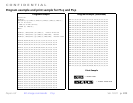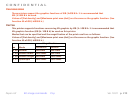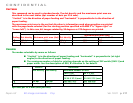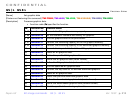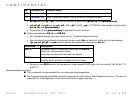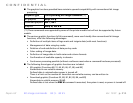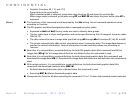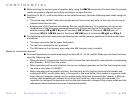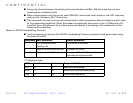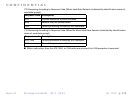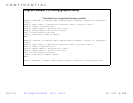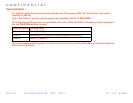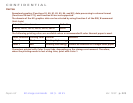CONFIDENTIAL
Paper roll Bit-image commands GS ( L GS 8 L
Ver. 10.01 p. 216
■ When printing the various types of graphics data, using the ESC U command will ensure that the printed
results are properly aligned vertically by printing in a single direction.
■ Functions 65, 66, 67, or 68 write data to a non-volatile memory. Note the following items when using the
function.
• The printer may be BUSY when storing data and will not receive any data. In this case, be sure not to
transmit data from the host.
• Excessive use of this function may destroy the non-volatile memory. As a guideline, do not use any
combination of the following commands more than 10 times per day for writing data to the non-
volatile memory: FS q, GS ( A (part of functions), GS ( C (part of functions), GS ( E (part of
functions), GS ( L / GS 8 L (part of functions), GS ( M (part of functions), GS g 0, and FS g 1.
■ The following restrictions apply when performing non-volatile memory operations (including data store
and delete).
• The paper cannot be fed by paper feed switch.
• The real time command is not processed.
• The ASB status will not be sent, even when the ASB function is set to enable.
[Notes for transmission process]
■ Data send operations are performed using Functions 48, 51, 52, 64, and 80. When you use these functions,
obey the following rules.
• When the host PC transmits the function data, transmit the next data after receiving the corresponding
data (Header ~ NULL) from the printer.
• When operating with a serial interface, be sure to configure operation so that the host computer uses
the printer only when it is READY.
• When operating with a parallel interface, the data sent by this function (starting with Header and
ending with NUL), as with other data, is first stored in the send buffer, then output in sequential order
when the host computer changes to the reverse mode. Note that the send buffer capacity is 99 bytes,
and any data exceeding this volume limit will be lost; therefore, when using this command, it is
important to configure the operation so that the host computer’s change to the reverse mode and the
subsequent status send/receive process is performed quickly.




